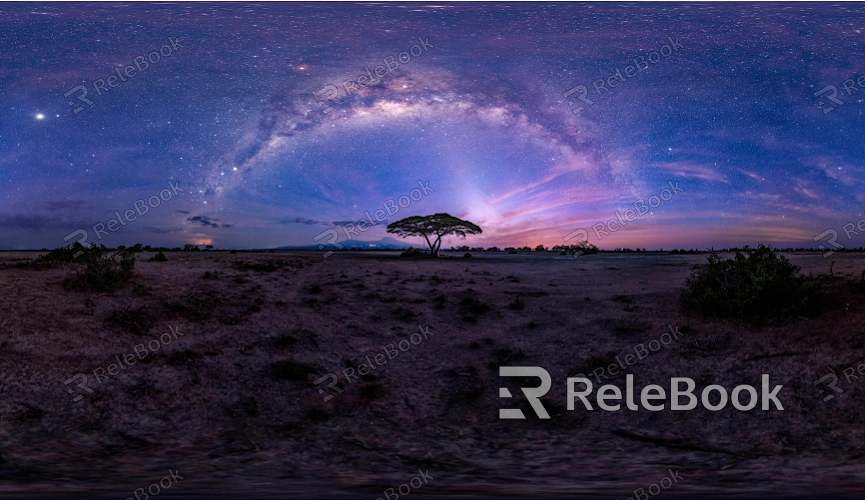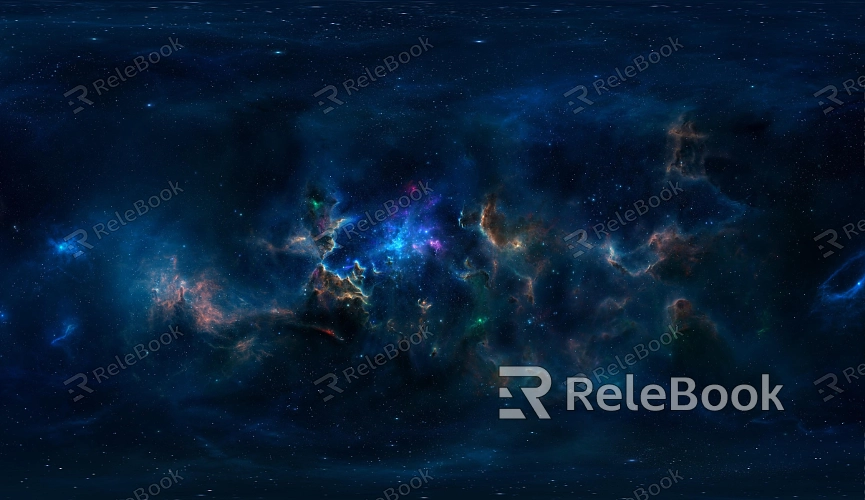What File Formats Are Best for HDR Texture Backgrounds
High Dynamic Range images capture and display a vast range of brightness, making them invaluable for industries like game design, post-production, and virtual reality. Commonly used in software such as Blender, Maya, 3ds Max, and Unreal Engine, these textures serve as backgrounds or light sources to create realistic lighting environments. This article explores popular HDR file formats and helps you decide which is best for your project’s specific needs.

1.HDR File Format
The .HDR file format, also known as Radiance RGBE, is one of the most widely used formats for high dynamic range textures. Known for its efficient compression, this format handles a wide range of brightness levels while preserving detail in both the highlights and shadows. The reasons for its popularity in 3D design and rendering include:
High-precision lighting data: The .HDR format is capable of storing highly accurate lighting information, making it crucial for simulating physical realism, especially in the accuracy of scene lighting.
Strong compatibility: Almost all major 3D software supports .HDR files, making them an ideal choice for cross-platform work.
Lightweight files: Compared to other HDR formats, .HDR files are relatively small, making them ideal for rendering larger scenes without consuming excessive memory.
This makes the .HDR format an excellent choice for projects that need high-quality lighting but must also manage file size efficiently.
2. EXR File Format
The .EXR file format was developed by Industrial Light & Magic and is widely used in the film and visual effects industry due to its open-source nature and multiple compression options. Key features of this format include:
Multi-layer storage: .EXR files allow you to store multiple channels and layers in one file, such as lighting, reflection, and other passes. This is highly flexible for post-production, allowing for more fine-tuning during the compositing stage.
Lossless compression: The .EXR format supports several lossless compression algorithms, significantly reducing file size while maintaining image quality.
Floating-point data: It supports 16-bit and 32-bit floating-point data, which is highly beneficial for projects requiring ultra-precise lighting calculations and color rendering.
.EXR is particularly well-suited for high-end, film-grade rendering projects where multi-layer storage and post-production adjustments are essential.
3.TIFF File Format (with HDR extension)
The .TIFF format is a highly versatile image format, and with HDR extensions, it can also store high dynamic range images. Notable characteristics include:
Broad compatibility: .TIFF is widely supported across almost all image editing and rendering software, making it a practical choice in various workflows.
High fidelity: It retains full color information and dynamic range, making it perfect for projects that require high-precision image output.
Larger file sizes: Although .TIFF offers excellent quality, its files are generally much larger than those of .HDR or .EXR. This makes it less suitable for projects where file size is a concern, but ideal for those prioritizing top-tier quality.
For projects requiring superior image quality and where storage size isn’t an issue, .TIFF is a reliable option. However, it can be cumbersome for regular 3D design workflows due to its large file size.

4.PNG (with extensions)
While .PNG is generally used for standard bitmap images, it can support high dynamic range data through extensions. However, .PNG is not considered a true HDR format, and its limitations include:
Limited dynamic range: As a standard dynamic range format, .PNG cannot preserve extreme brightness details as effectively as .HDR or .EXR.
High compatibility: Because .PNG is a universally accepted format, it integrates easily with most image editing and 3D software. However, for HDR texture processing, .PNG is more of a secondary option.
.PNG can work for scenes where you need a balance between HDR effects and file usability, but it’s not ideal for high-precision HDR texture work.
5. JPEG (with HDR extension)
.JPEG also offers an HDR extension to support a broader range of brightness levels, but there are some drawbacks:
Lossy compression: JPEG’s lossy compression removes some details, making it less suitable for 3D scenes requiring precise lighting.
Small file size: Unlike .HDR and .EXR formats, .JPEG files are very small, which is great for projects focused on storage and rendering speed.
While .JPEG HDR can handle HDR images, it’s best suited for quick previews or small projects, not for large-scale renders that require accurate lighting.
6. Considerations for Choosing a Format
When choosing the right HDR texture background file format, several factors should guide your decision:
Image precision: If you need high-precision lighting and color detail, formats like .EXR and .HDR are optimal.
File size: For large-scale scene rendering, smaller formats like .HDR are preferable, whereas .TIFF is better suited for projects where file size isn’t a limitation.
Rendering speed: Larger formats may slow down rendering, so you’ll need to find a balance between the project’s scale and the required quality.
Each HDR file format serves a unique role in rendering scenes, offering varying degrees of lighting accuracy, file size, and rendering speed. Understanding these differences allows you to choose the most suitable file type for your project, ultimately improving your workflow and enhancing the final output.
For high-quality HDR images, 3D textures, SketchUp models, or 3ds Max assets to use in your virtual scenes, Relebook is a great resource. Download textures and models from Relebook, and importing them into 3ds Max can dramatically boost the quality of your work.

